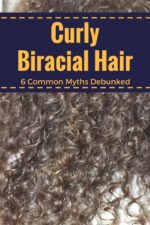I remember seeing Sage Steele anchoring Sportscenter on ESPN for the first time a few years ago. She was the only woman at the desk chatting with a few other male analysts. I was in awe by how well she held her own.
It’s actually kind of sad when you think about it because having a woman anchoring a sports show should be standard, like any man doing the same thing. But that’s how the world operates, unfortunately. Journalism as a whole is still very white male dominated.
I’ve been in the business for over ten years, and black people are still in the minority. If you’re a woman of color, the field is even more narrow. Despite discrimination, Steele has managed to overcome many obstacles in her professional career. She recently opened up to The Huffington Post about being biracial with curly hair in the media.
“[I decided to go with the curls out of] laziness and, initially, because why am I going to spend half an hour extra getting ready every day to straighten this? … At one point I was told that I was taken out of consideration for a pretty major job because of my hair. It’s insane and I was told by one of my agents. That hurt, but now I’m like, “I’m really sticking to it!” And I preach that [lesson] to women — being yourself and being true to who you are.”
The 43-year-old host and army brat also talks her childhood, saying that she didn’t see color growing up.
“In the military, race doesn’t matter. There are so many interracial relationships and marriages in the military. It’s probably the most diverse group that you’ll find — and I don’t think people think of it that way — but it doesn’t matter. Race, religion, none of it matters, and I didn’t know any different until we moved to Carmel, Indiana, a suburb of Indianapolis. You know, the thing is, I’ve met some wonderful people there, I really did. I didn’t even know that I was the only black student out of 1,800 kids until someone told me, because I didn’t look at people that way — I never have,” she says.
Steele says she was bullied throughout high school for her mixed background. To many, she was either too white or too black. Her curly hair was often viewed as an asset, but also made her a target for insults.
As she tells Washingtonian in a previous interview, she was the black girl with the beamer at her Carmel High School in Indianapolis. She also recalls white boys surrounding her in the hallway calling her the “N-word.”
Even though she had a tough time, she says she wouldn’t change it for the world. When to comes to how she identifies herself, Sage says she doesn’t leave out either side.
“My mom is white, half-Irish and half-Italian, and my dad is black — so, I identify exactly 50 percent with each. Even though, if someone were to see me on TV, they wouldn’t go like, “Oh yeah, you know that white girl with curly hair that does the NBA?” No, they’re going to say the black girl, but it’s really important to me to identify with my mom’s side, as well.
Yeah, and I’m experiencing stereotypes even to this day, from both sides. Sometimes it’s even tougher — and the words and comments are uglier — from black people … I can’t tell you how many times I’ve been called a sellout for marrying a white man and for having kids that look white,” she tells The Huffington Post.
It’s hard to believe that this type of bigotry still exists today. I’ve also received a ton of hate on social media for marrying outside of my race. Don’t even get me started on the questions and comments about our kids.
The reality is that we can’t control how people think. But, we can only control our own actions and what we teach our children.
It’s not unusual for someone who is biracial to pick a side. Take Halle Berry, for example. She says she considers herself and daughter, Nahla black based on the “one drop rule.”
It all boils down to personal preference. But when it comes to our children, my husband and I choose not to omit either side. Our children are both white and black. We also teach them to embrace their curls.
While I understand that people will label them black, I think the most important thing – as Steele mentions – is how they identify themselves.












